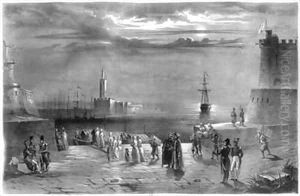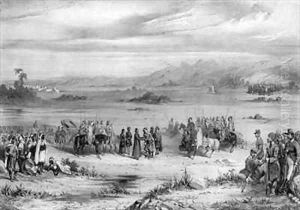Coppin Paintings
François Coppin was a French painter and engraver known for his landscapes and architectural works. Born in 1626 in France, Coppin's early life and training are not well-documented, which is common for many artists of the period. However, it is known that he was active during the 17th century, a time when the Baroque style was predominant in European art.
Coppin's career unfolded during an era when artists were increasingly interested in capturing the natural world and the grandeur of man-made structures. His works often depicted serene landscapes and impressive buildings, which were popular subjects among the wealthy patrons of the time. Coppin's engravings and paintings displayed a fine attention to detail and a keen eye for the interplay of light and shadow, which was typical of the Baroque aesthetic.
Unfortunately, Coppin's life was cut short when he died in 1658. Despite his relatively brief career, he left behind a body of work that has been appreciated for its contribution to the French art of the period. His artworks may not be as widely recognized as those of his contemporaries, but they offer valuable insights into the landscape and architectural art that flourished in France during the mid-17th century.

